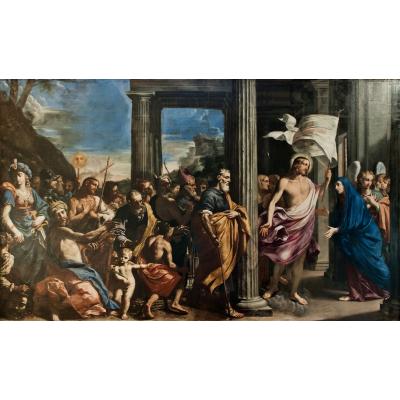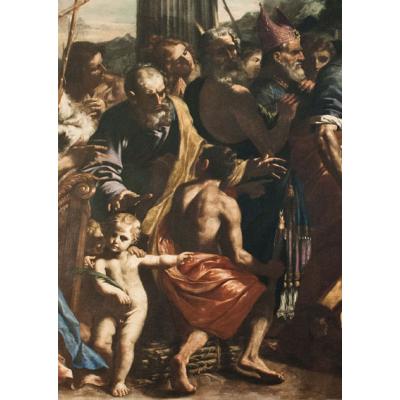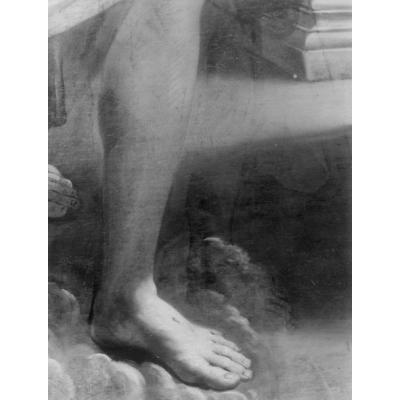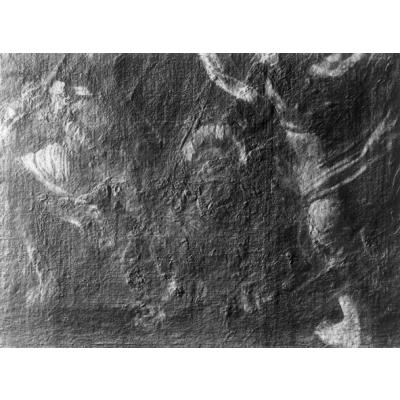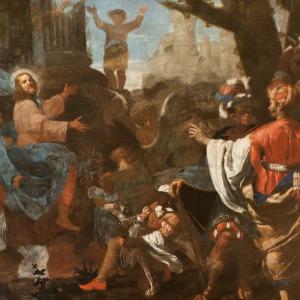Schede
Lorenzo Pasinelli (1629 – 1700), Jesus appears to his mother, Jesus enters Jerusalem, 1657 - 1658. Size 500 x 350 cm. ca each. The former is signed below, center, ‘LORENZO PASINELLI F. 1657; the latter is signed below, center ‘LORENZO PASINELLI F. 1658.’. Bologna, church of San Girolamo della Certosa, nave.
These two works best represent the style of a major painter of the second half of the 16th century. The stylistic features of Bolognese Classicist painting are easily detectable in Jesus Appears to His Mother, while in Jesus Enters Jerusalem Pasinelli appropriates the earthy, dark colors of the Florentine and Neapolitan schools. These two paintings were his first relevant public commission and mark his stylistic maturity.
The restoration | During the restoration carried out by the Laboratorio degli Angeli it came out that Pasinelli’s work actually covered two previous paintings in an advanced state of composition, possibly authored by Father Marco da Venezia, who was already working at the Carthusian monastery. Most likely, the Prior of the convent was not satisfied with the result and summoned one of the best known artists then working in town. Since the underlying painting is visible to the naked eye just next to the sections covered by the frame, a logical explanation might be that Pasinelli worked directly inside the church on a scaffolding reaching up to the two large canvases.
Lorenzo Pasinelli (1629 – 1700) |The artist’s training was “tutored” by Simone Cantarini and Flaminio Torri. He was thus able to draw on Guido Reni’s Classical pictorial language through two of his best pupils. The two large canvases for the Certosa witnessed to his full-fledged maturity and were followed by important commissions in Mantua, Turin and Rome. His subsequent stay in Venice proved a truly fundamental experience for Pasinelli: the Classical legacy with which he had become familiar in Bologna and Rome was complemented by the warm, iridescent colors used by Venetian artists. Given his ability in portraying secular subjects, he produced a considerable number of chamber paintings for the most important European courts. Among such paintings it is worth mentioning the numerous versions of the Nymphs disarming the amorettos, all with different variations, whose pictorial technique gradually became lighter and gentler.

